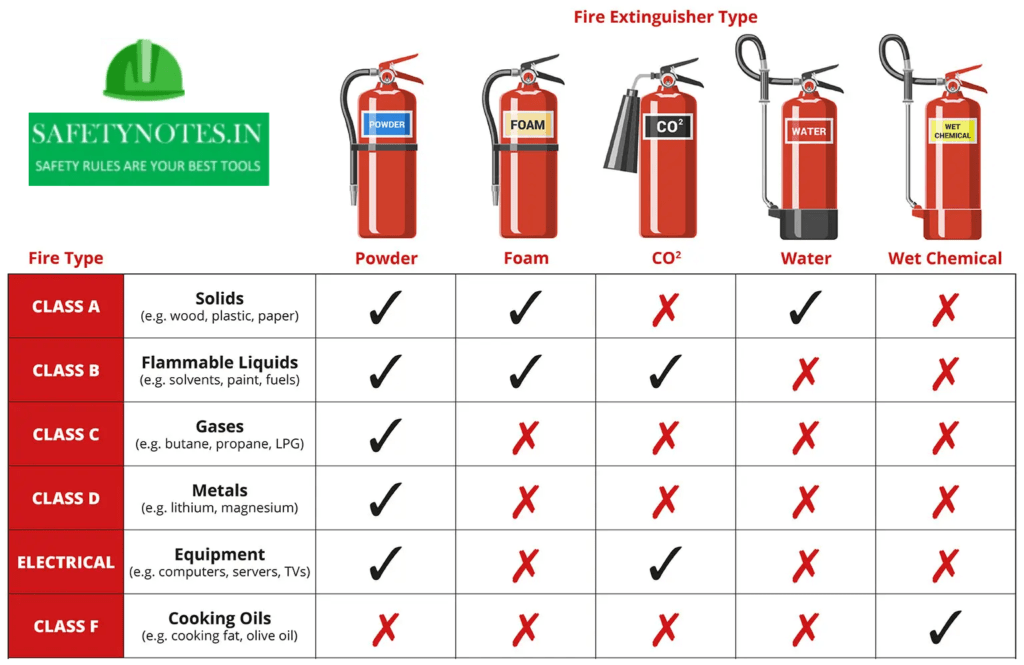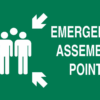1. Introduction
Fires can happen at any time and in any place. Whether at home, in the workplace, or in a public setting, it is important to be prepared for emergency situations. The Occupational Safety and Health Administration (OSHA) states that small businesses should prepare for fire emergencies. One essential tool for fighting fires is the fire extinguisher. A fire extinguisher is a device used to control or extinguish small fires, and it is important to know how to use one effectively in order to prevent serious damage or injury.
In this article, we will discuss the basics of using a fire extinguisher, including how to choose the right type of extinguisher, how to prepare for its use, and the steps to take when using it. We will also cover important safety precautions to keep in mind when dealing with fires, as well as additional tips for preventing fires and staying safe in emergency situations.
By the end of this article, you will have a better understanding of fire extinguishers and the steps to take in case of a fire. With this knowledge, you will be better equipped to protect yourself and those around you in the event of an emergency. So let’s get started!
2. Preparation
Before using a fire extinguisher, it’s important to take certain safety precautions to prevent injury or damage. Here are some important steps to take when preparing to use a fire extinguisher:
- Assess the Situation: First and foremost, assess the situation to determine if you should use a fire extinguisher or evacuate the area. If the fire is too large or spreading rapidly, evacuate immediately and call emergency services.
- Alert Others: If there are other people in the area, alert them of the fire and instruct them to evacuate immediately. If possible, assign someone to call emergency services.
- Identify the Nearest Fire Extinguisher: Locate the nearest fire extinguisher and make sure you know how to use it. If you’re not sure, read the instructions or ask for help.
- Familiarise Yourself with the Components: Familiarise yourself with the components of the fire extinguisher, including the nozzle or hose, and make sure you know how to aim and direct the extinguishing agent.
- Stand at a Safe Distance: Stand at a safe distance from the fire, usually between 6-8 feet, to avoid injury from flames or heat.
By taking these steps before using a fire extinguisher, you can minimise the risk of injury and increase your chances of successfully extinguishing the fire. Remember, safety should always be your top priority when dealing with fire.
3. Steps for Using a Fire Extinguisher – PASS
Using a fire extinguisher can be intimidating, but following these simple steps can help you use it effectively and safely:
Remember the acronym PASS: PASS stands for Pull, Aim, Squeeze, and Sweep, and it’s a useful acronym to help you remember the steps for using a fire extinguisher.
- P – Pull the Pin: With one hand, pull the pin located on the top of the extinguisher. This will allow you to activate the extinguisher.
- A – Aim at the Base of the Fire: Aim the nozzle or hose at the base of the fire, not at the flames themselves. This will help to extinguish the source of the fire, rather than just the visible flames.
- S – Squeeze the Handle: With your other hand, squeeze the handle of the fire extinguisher to release the extinguishing agent. Use short bursts rather than a continuous stream to conserve the agent.
- S – Sweep from Side to Side: Sweep the extinguishing agent from side to side across the base of the fire, keeping the nozzle or hose aimed at the base. Continue until the fire is completely extinguished.

- Watch for Re-Ignition: Even if the fire appears to be out, keep an eye on the area for re-ignition. If the fire reignites, repeat the process or evacuate immediately if necessary.
- Evacuate if Necessary: If the fire is too large, spreading too quickly, or you’re unable to extinguish it, evacuate immediately and call emergency services.
By following these simple steps and remembering the PASS acronym, you can use a fire extinguisher effectively and safely to put out small fires before they become larger and more dangerous.
4. Types of Fires and their Extinguishing Agents
Different types of fires require different types of extinguishing agents. For classification of fire extinguishers check out our article: Classes of Fire & Fire Extinguisher.

It’s important to note that some extinguishing agents may be harmful or ineffective for certain types of fires, so it’s important to use the correct extinguishing agent for the specific type of fire you’re dealing with.
By understanding the different types of fires and their corresponding extinguishing agents, you can use a fire extinguisher more effectively and safely. Always remember to read the label and instructions on the extinguisher before use to ensure you’re using the correct agent.
5. How to Inspect Fire Extinguisher
Inspecting your fire extinguisher regularly is an important part of fire safety. Fire extinguishers must be checked regularly to ensure that they are in good working condition. Depending on the type of extinguisher and the environment in which it is stored, inspections should be done monthly.
Here are the steps to properly inspect your fire extinguisher:
- Check the Location: Ensure that the fire extinguisher is in its designated location and is easily accessible.
- Verify the Expiration Date: Look at the expiration date on the extinguisher to ensure it’s still valid. If it’s expired, it may not work properly and should be replaced immediately.
- Check the Pressure Gauge: The pressure gauge on the fire extinguisher should be in the green zone, indicating that it’s properly pressurized. If the gauge is in the red zone or is not moving, it may need to be recharged or replaced.
- Inspect the Nozzle and Hose: Make sure that the nozzle and hose are not damaged, clogged, or corroded. If there’s any damage, the fire extinguisher may not work properly and should be replaced.
- Look for Physical Damage: Check for any physical damage on the extinguisher, such as dents, cracks, or rust. Any damage can compromise the integrity of the extinguisher and should be replaced.
- Ensure the Safety Pin is in Place: The safety pin on the fire extinguisher should be in place and intact. If the safety pin is missing or broken, the extinguisher may have been used or tampered with and should be inspected by a professional.
- Check the Instruction Label: Make sure the instruction label on the fire extinguisher is legible and facing outward. The label provides important information on how to use the extinguisher and what types of fires it can be used for.
- Proper Storage: Fire extinguishers should be stored in a visible and easily accessible location, away from potential hazards such as heat sources, direct sunlight, and chemicals. Storing them in a cabinet or on a wall-mounted bracket can protect them from physical damage.
- Servicing: It’s important to have your fire extinguisher serviced by a qualified professional at least once a year. During this service, the technician will check the condition of the extinguisher, recharge it if necessary, and replace any damaged parts.
By inspecting your fire extinguisher regularly, you can ensure that it’s in good working condition and ready to use in case of an emergency. If you notice any issues during your inspection, such as an expired or damaged extinguisher, be sure to replace it immediately. Additionally, it’s recommended to have a professional inspect your fire extinguishers regularly to ensure they’re in proper working order.
6. Additional Fire Safety Tips
In addition to knowing how to use a fire extinguisher, there are several other fire safety tips that can help you prevent fires and stay safe in the event of a fire:
- Install Smoke Detectors: Smoke detectors are an essential tool for early detection of fires. Make sure you have smoke detectors installed on every level of your home, and test them regularly to ensure they’re working properly.
- Create a Fire Escape Plan: In the event of a fire, it’s important to have a plan in place for how to evacuate safely. Create a fire escape plan with your family, and practice it regularly.
- Keep Extinguishers Accessible: Make sure fire extinguishers are easily accessible in case of emergency. Keep them in visible and easily accessible locations, and ensure everyone in your household knows where they’re located.
- Use Electrical Equipment Safely: Faulty electrical equipment is a common cause of fires. Be sure to use electrical equipment safely, and never overload outlets or extension cords.
- Properly Store Flammable Materials: Flammable materials such as gasoline, paint, and cleaning products should be stored in a cool, dry place away from heat sources and open flames.
- Keep Cooking Areas Safe: Cooking fires are a common cause of home fires. Never leave cooking unattended, keep flammable materials away from the stove, and keep a lid nearby to smother any potential flames.
- Stay Calm and Evacuate if Necessary: In the event of a fire, it’s important to stay calm and evacuate as quickly and safely as possible. Remember that your safety and the safety of others is the top priority.
By following these additional fire safety tips, you can help prevent fires from occurring and be better prepared in case of an emergency. Remember that fire safety is a shared responsibility, and everyone in your household should be aware of and follow these safety measures.
Conclusion
Knowing how to use a fire extinguisher is a crucial part of fire safety. By understanding the different types of fires and their extinguishing agents, as well as following the proper steps for using a fire extinguisher, you can help prevent fires and keep yourself and others safe in the event of an emergency.
Remember to always keep your fire extinguishers accessible and in good working condition by inspecting them regularly. Additionally, following additional fire safety tips such as installing smoke detectors, creating a fire escape plan, and using electrical equipment safely can help further prevent fires and ensure your safety.
In case of a fire, it’s important to stay calm and evacuate as quickly and safely as possible. Remember that your safety and the safety of others is the top priority.
By following the guidelines outlined in this article, you can feel confident and prepared to handle a fire emergency if one were to occur. Stay safe and make fire safety a priority in your daily life.


